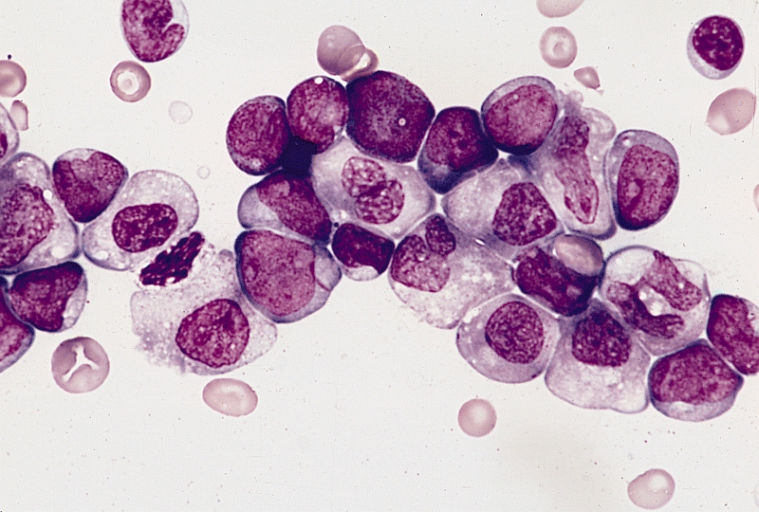Chemotherapy is the standard treatment for acute myeloid leukemia (AML), a type of blood cancer that affects the bone marrow, however its aggressive nature means this treatment is not always effective. In patients age 60 and older, the five-year survival rate for AML is just five to 15 percent.
A team from Imperial College London has found that when leukemia cells infiltrate the bone marrow, they displace developing blood stem cells, reducing the production of healthy, mature blood cells. This phenomenon leads to a whole host of symptoms, including infection and anemia, and can negatively influence the likelihood of successful treatment with chemotherapy.
The researchers also found that a drug used to treat hemochromatosis – a condition characterized by the abnormal accumulation of iron in the body – could have a protective effect on the bone marrow and the blood stem cells. According to their findings – which were published in the journal Cell Stem Cell – this iron overload drug could enhance the effects of chemotherapy.
“Since the drug is already approved for human use for a different condition, we already know that it is safe,” said lead author Dr. Cristina Lo Celso from the Department of Life Sciences at Imperial. “We still need to test it in the context of leukemia and chemotherapy, but because it is already in use we can progress to clinical trials much quicker than we could with a brand new drug.”
Using in vivo imaging, Lo Celso and her colleagues visualized how leukemia cells invade the bone marrow in mice. In this way, they were able to identify the regions of blood vessels responsible for the production of blood stem cells that were most affected by the cancer cells.
To combat this, the team tested the effects of deferoxamine, a small molecule drug approved to treat hemochromatosis. The group found that the drug had a protective effect on the blood stem cell-containing vessels in the bone marrow, and it also improved the efficacy of chemotherapy for AML.
“Our work suggests that therapies targeting these blood vessels may improve existing therapeutic regimes for AML, and perhaps other leukemia too,” said Delfim Duarte, a physician and PhD student in Lo Celso’s lab.
The researchers are now looking to test the effects of deferoxamine in AML patients in a clinical trial. They hope that by repurposing an existing drug, the usual 10 to 15 year development timeline could be significantly reduced.












Join or login to leave a comment
JOIN LOGIN